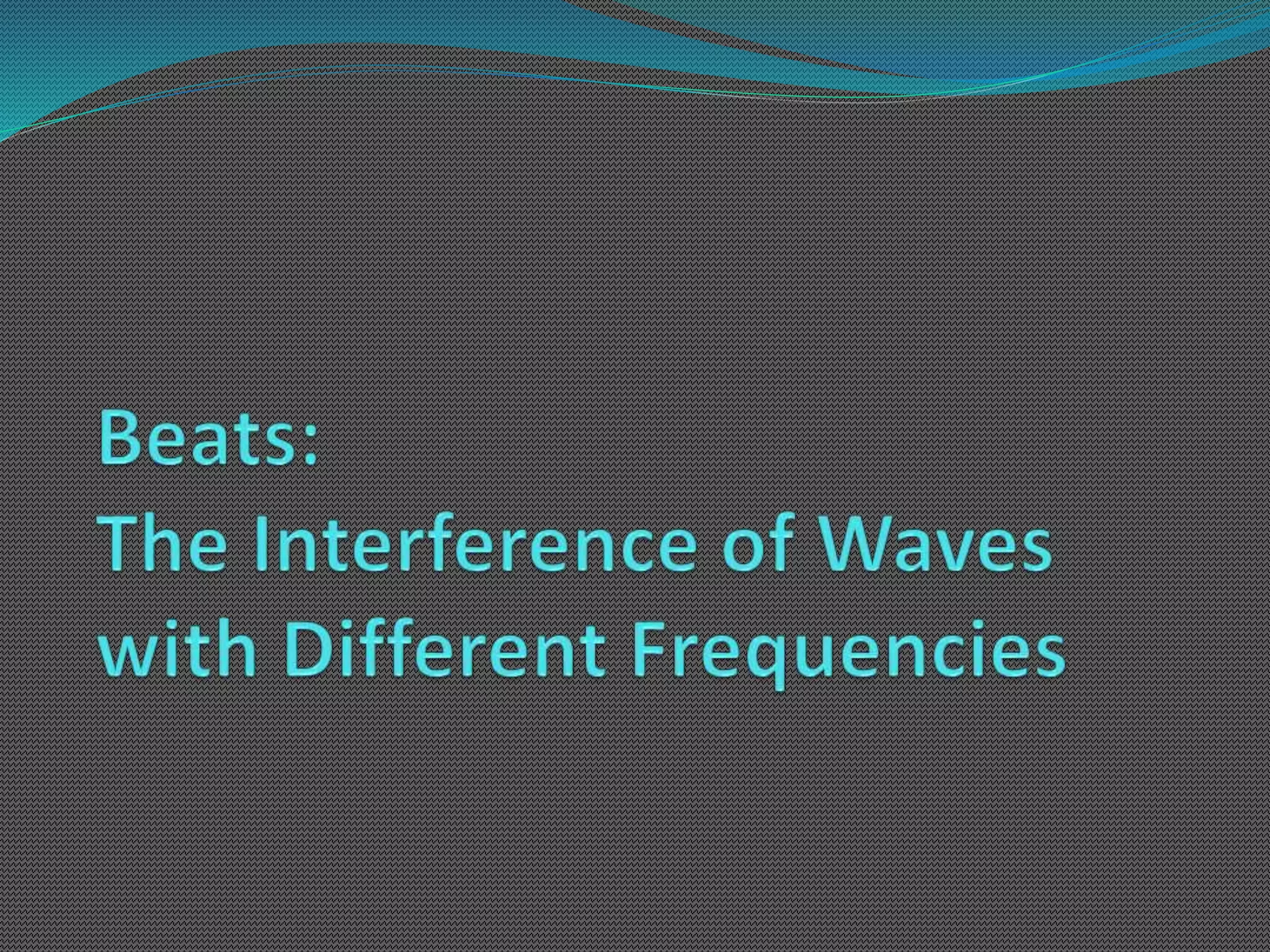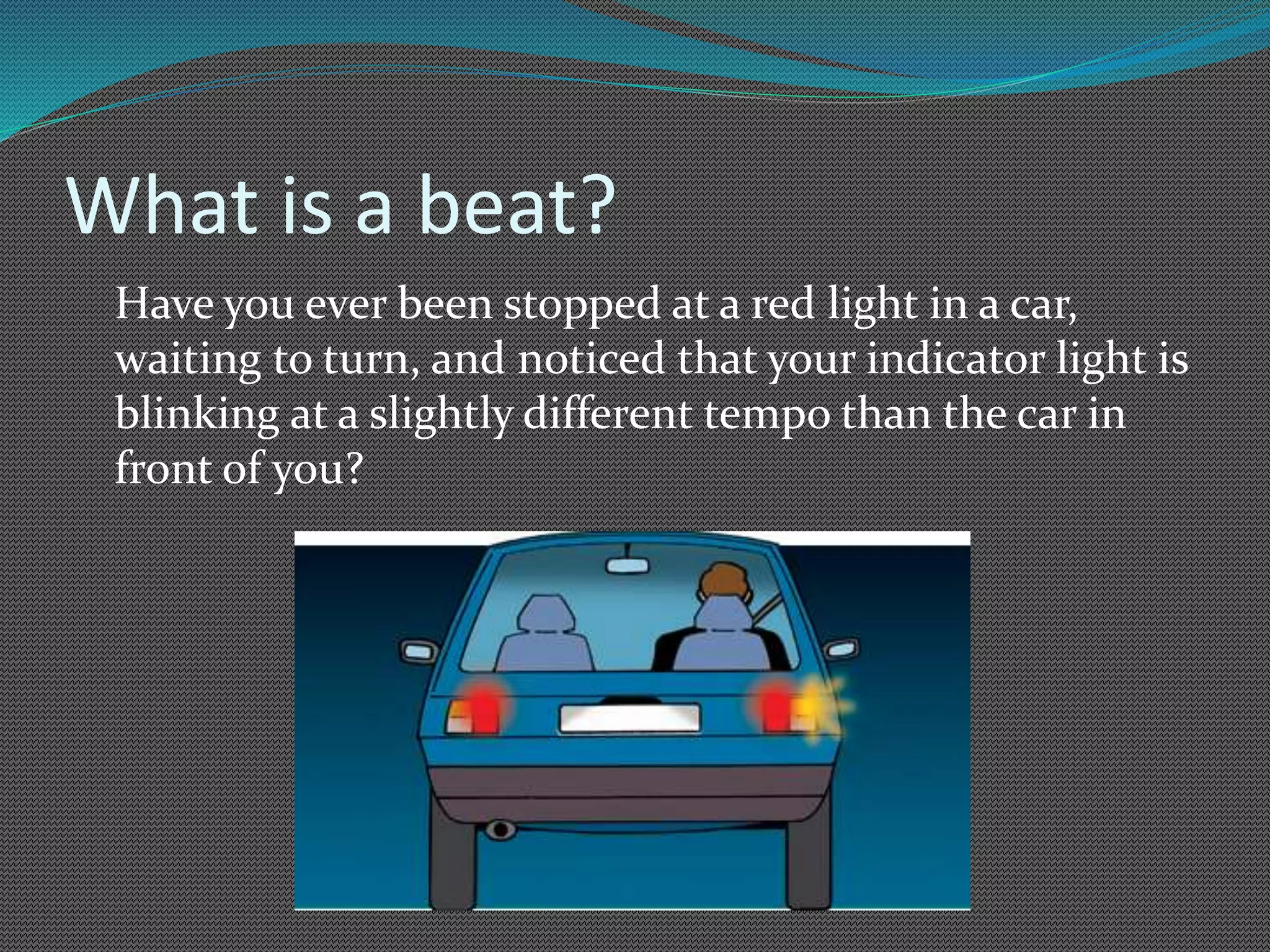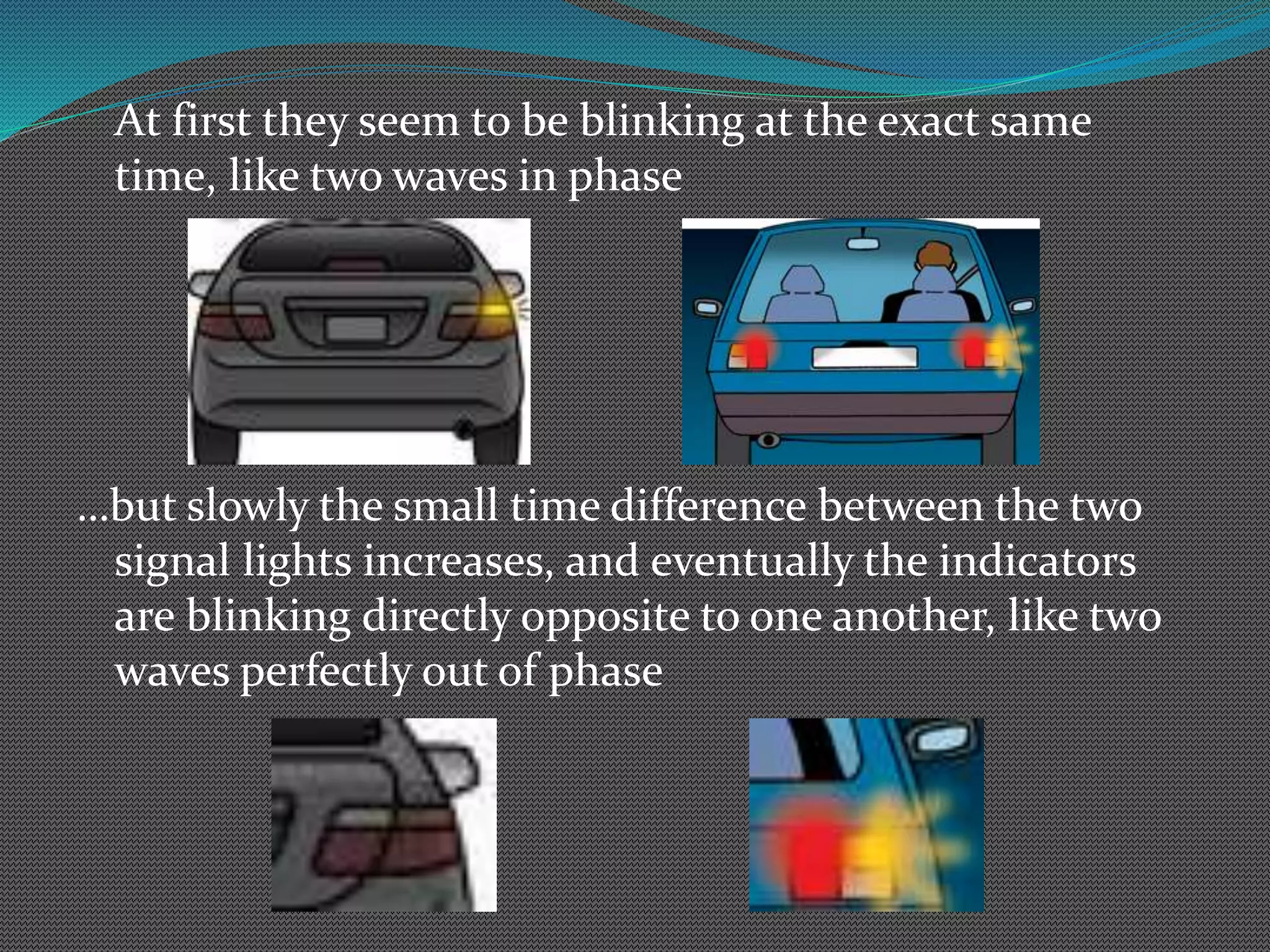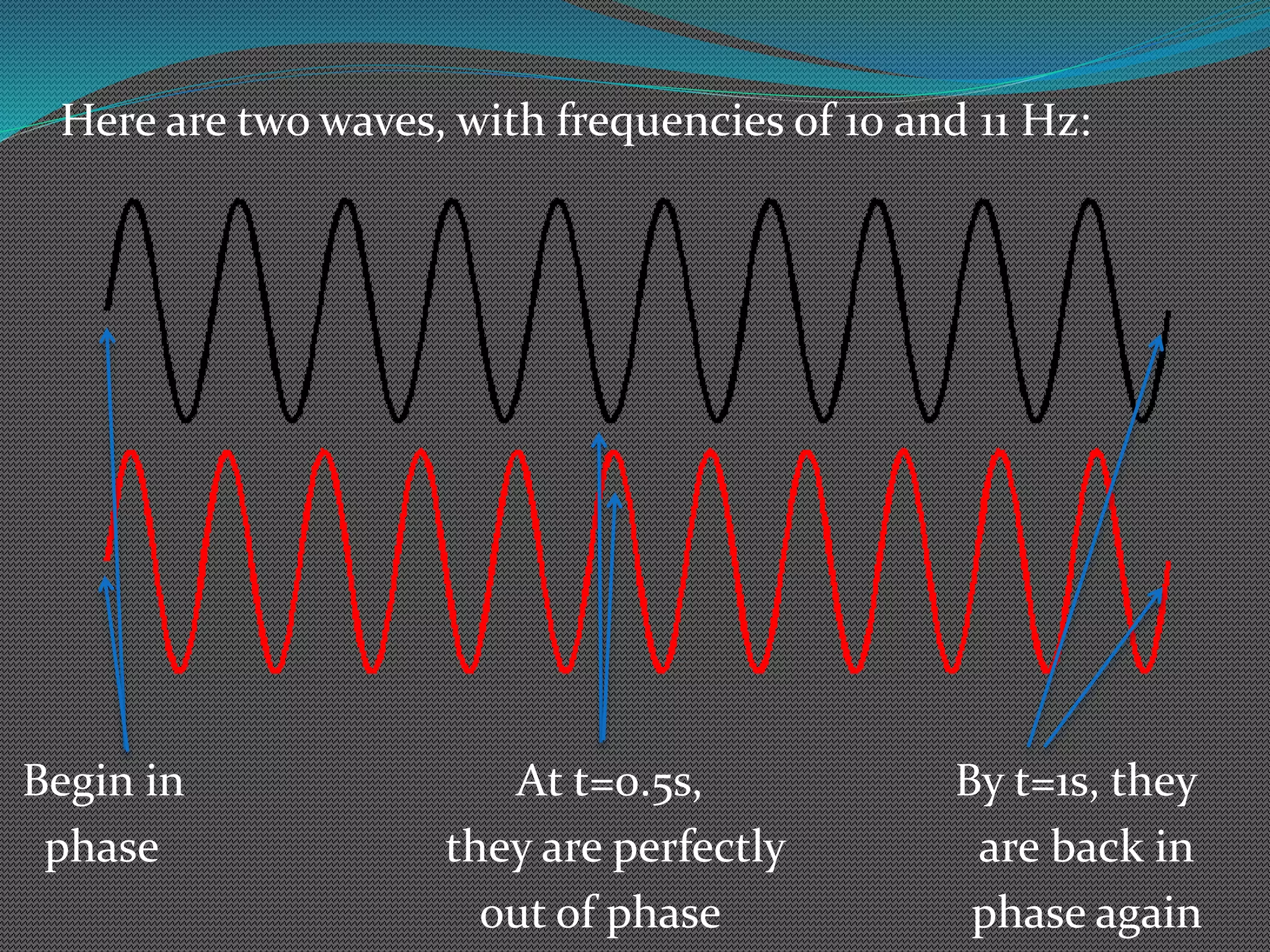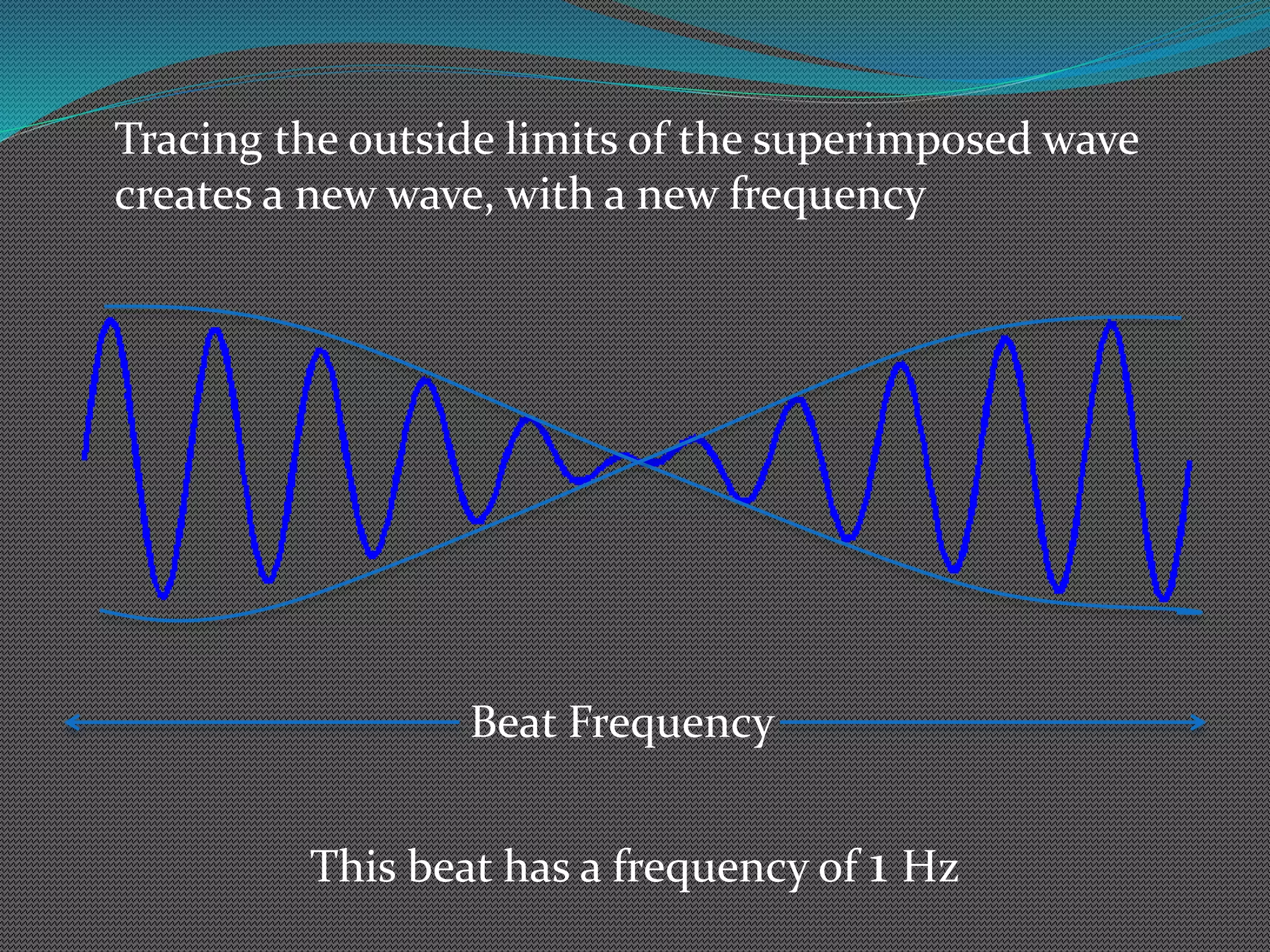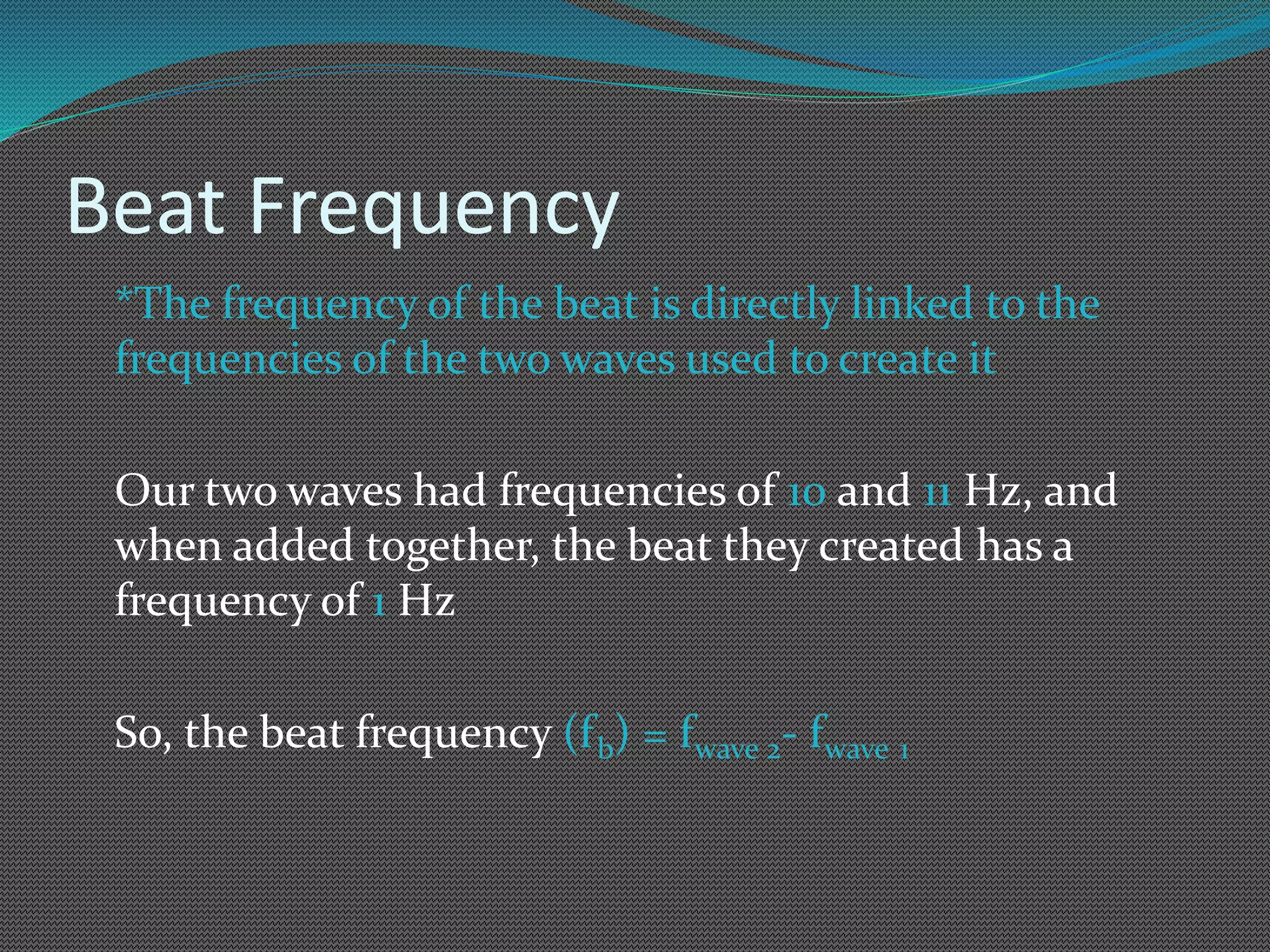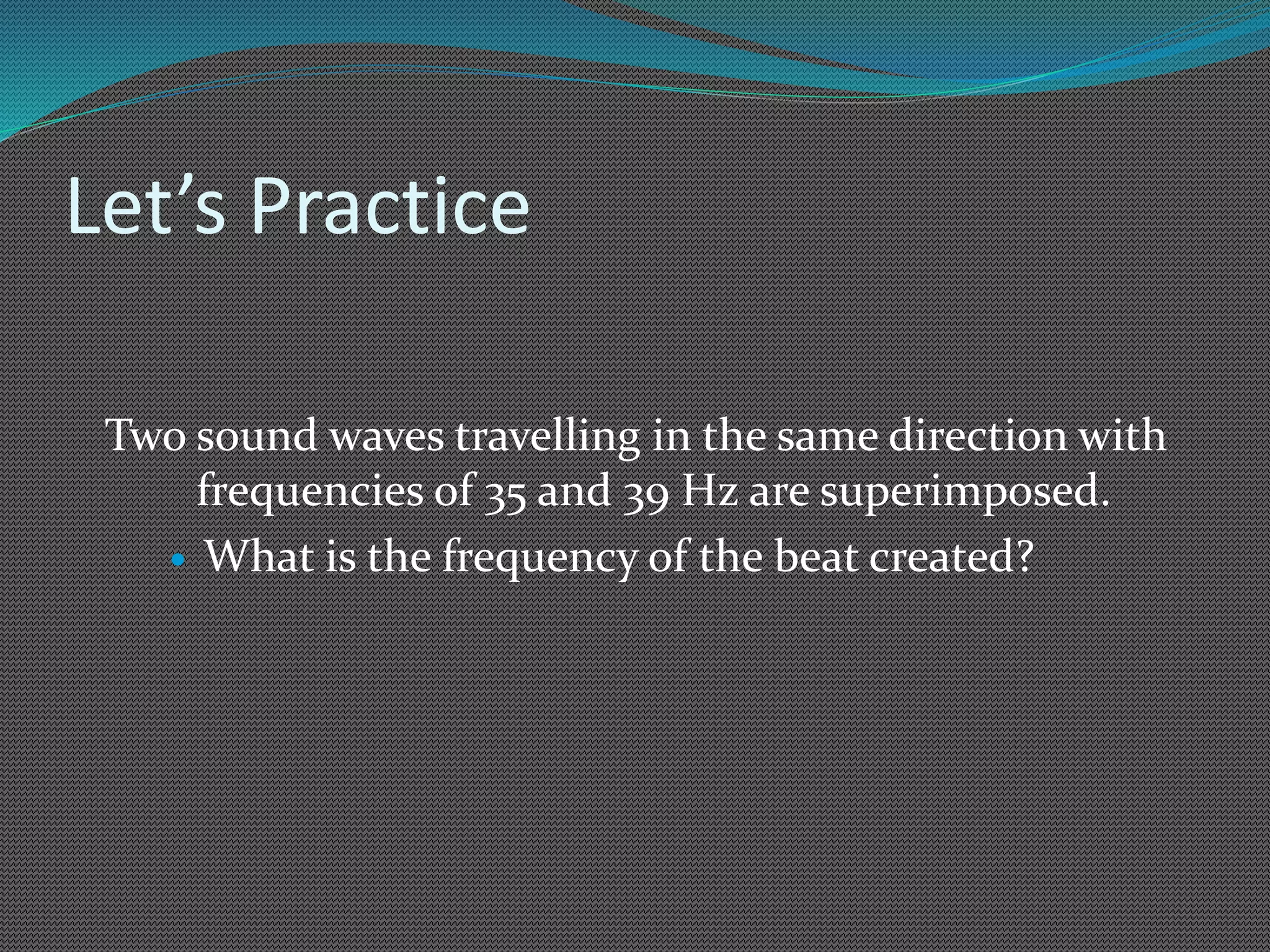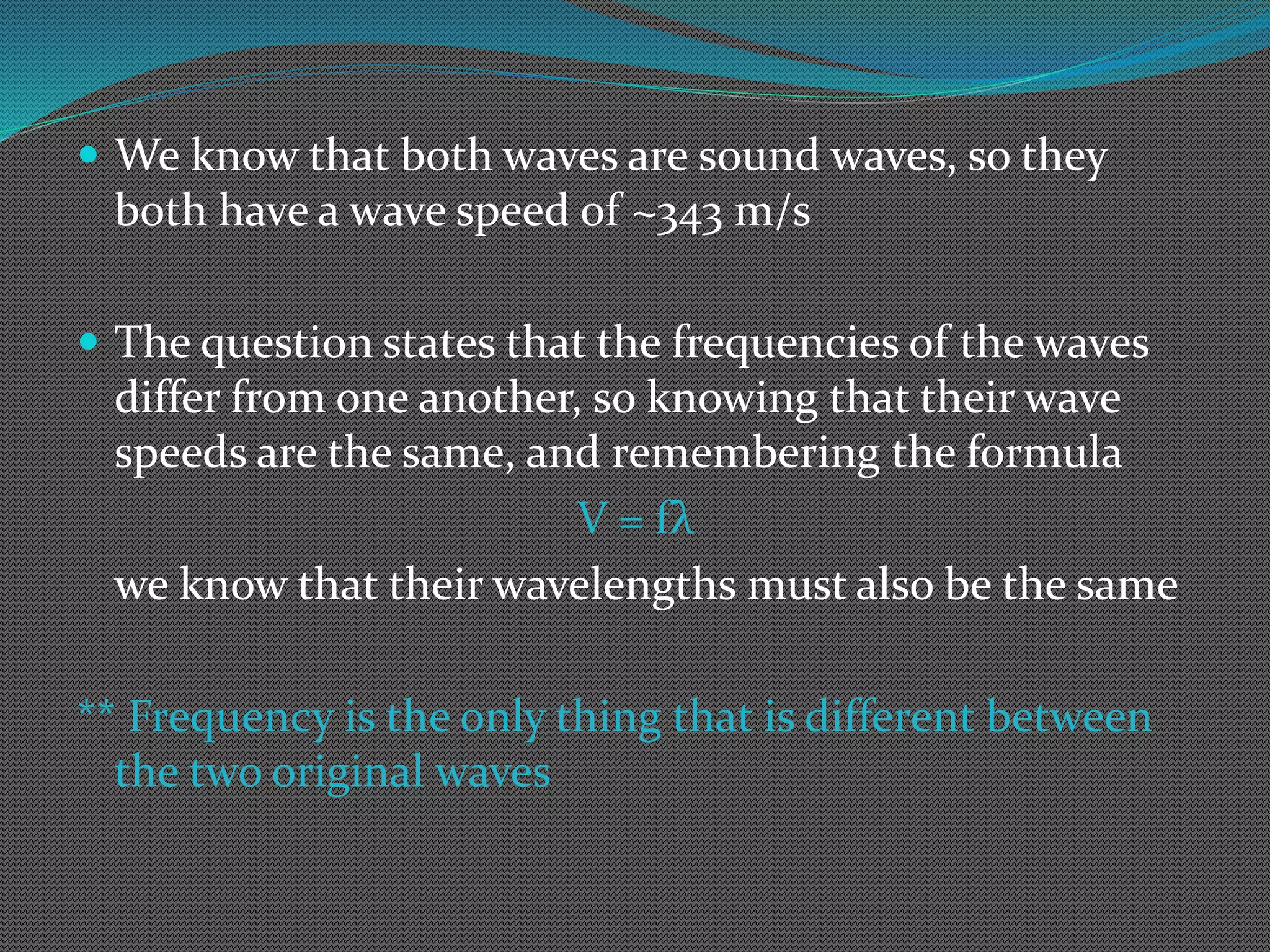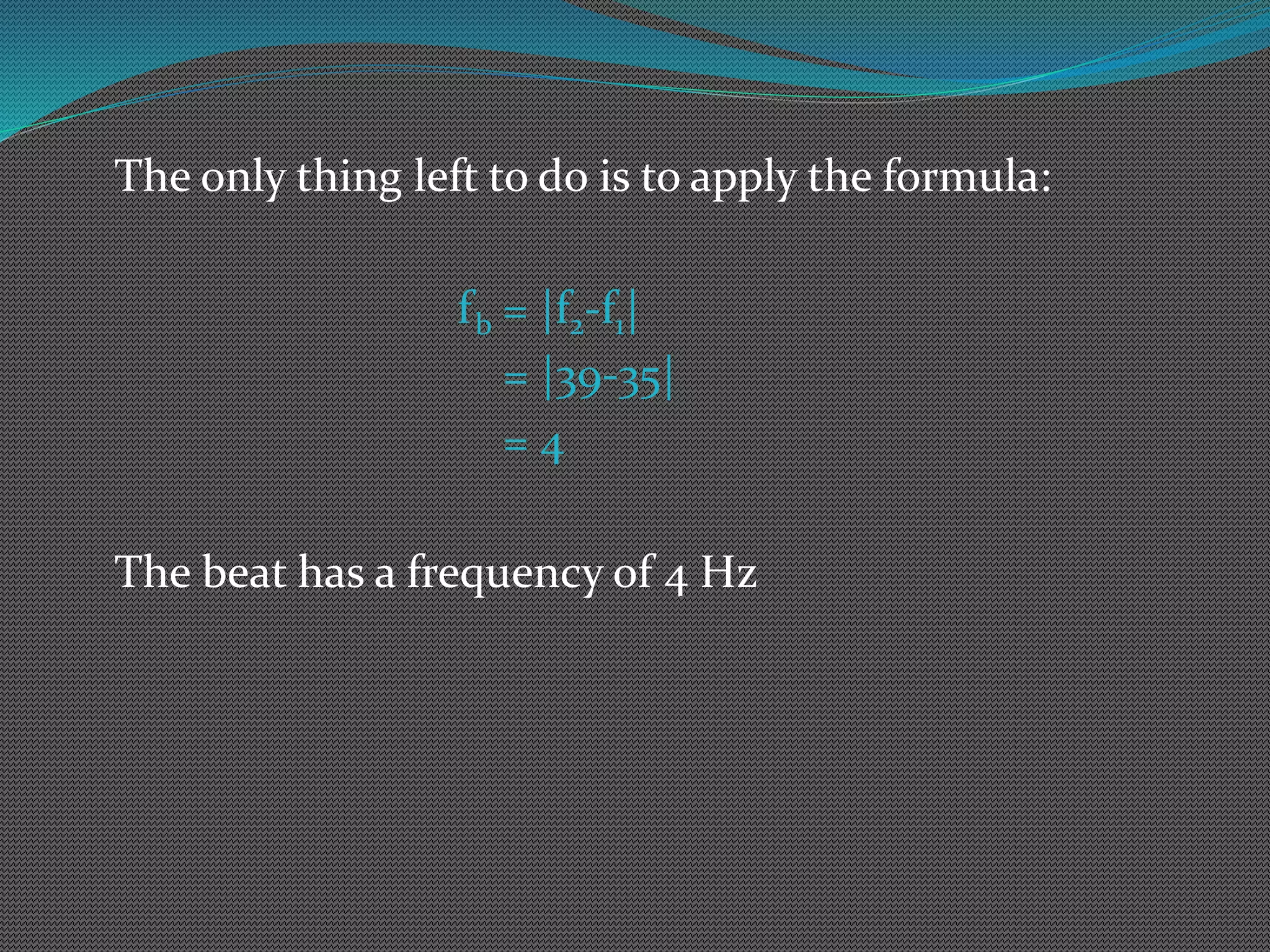This document explains what beats are and how they are created by the interference of two waves with different frequencies. When two waves with frequencies of 10 Hz and 11 Hz are superimposed, they will oscillate between constructive and destructive interference, creating a new wave with a frequency of 1 Hz called the beat frequency. The beat frequency is calculated by taking the absolute value of the difference between the two original frequencies. As an example, two sound waves with frequencies of 35 Hz and 39 Hz will produce a beat with a frequency of 4 Hz.
